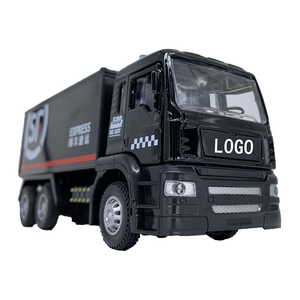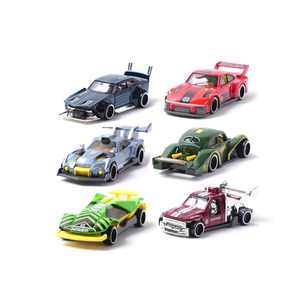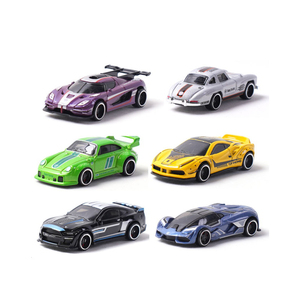(163361 products available)

































































































































































OEM car models are usually categorized into several types based on their functionalities and features. Here are some common types:
Body Parts
OEM components that make up the exterior structure of a vehicle, including hoods, fenders, doors, bumpers, and windows, are referred to as body parts.
Engine Components
OEM engine parts include items like pistons, crankshafts, camshafts, and gaskets, which are essential for the engine's performance and longevity.
Electrical Parts
OEM electrical components encompass a wide range of parts such as alternators, starters, batteries, and various sensors that are crucial for a vehicle's electrical system to function properly.
Exhaust Systems
OEM exhaust system parts include mufflers, catalytic converters, and exhaust pipes, which are important for regulating a vehicle's emissions and noise levels.
Interior Parts
OEM interior components consist of dashboard fittings, seats, upholstery materials, air conditioning systems, and audio equipment, all contributing to the vehicle's comfort and aesthetic appeal.
Suspension and Steering
OEM parts related to suspension and steering include shock absorbers, struts, control arms, steering racks, and tie rods, which are vital for a smooth ride and safe handling.
Transmission Parts
OEM transmission components encompass gears, clutches, torque converters, and transmission cases, essential for the smooth operation of a vehicle's transmission system.
Tires and Wheels
OEM wheels and tires are specifically designed for a vehicle's make and model, including alloy wheels, steel wheels, and a range of tire options for different driving conditions.
OEM Accessories
OEM accessories add extra features and functionalities to a vehicle, such as floor mats, spoilers, towing equipment, and navigation systems.
OEM Paint and Coatings
These are specially formulated paints and protective coatings used to maintain a vehicle's exterior finish, including touch-up paint kits and clear protective films.
OEM Lighting
These are components that include headlights, taillights, fog lights, and interior lighting fixtures, ensuring visibility and safety in various driving conditions.
OEM Fuel System Parts
These parts consist of fuel pumps, fuel injectors, carburetors, and fuel tanks, which are essential for the efficiency and reliability of a vehicle's fuel system.
OEM Safety and Security Parts
These components include airbags, seat belts, anti-lock brake systems, and alarm systems, all contributing to a vehicle's safety and security features.
OEM Performance Parts
These parts are designed to enhance a vehicle's performance, including high-performance air filters, exhaust systems, and suspension components.
Several factors should be considered to ensure the OEM car model meets the buyer's needs and expectations. Evaluating the make, model, and specifications is crucial. One should assess the brand reputation, reliability, and performance. Also, consider the vehicle's features, technology, and safety ratings. Additionally, one should analyze the total ownership costs. This includes the price, insurance, taxes, maintenance, and fuel expenses. More importantly, financing options and interest rates should be favorable.
Considering the environmental impact of the OEM car model is essential. Naturally, there are eco-friendly options with low-emission vehicles. These include hybrids, plug-in hybrids, and battery electric vehicles. Moreover, one should test drive the vehicle to experience the handling, comfort, and driving dynamics. This ensures the car meets the buyer's expectations in real-life conditions. Also, one should review the available options and packages. This includes selecting the trim levels, add-on packages, and standalone features that enhance the vehicle's value and utility.
Buyers should read customer reviews and testimonials to gain insights from actual owners. Their experiences help validate the OEM car model's performance, quality, and satisfaction. Additionally, one should compare similar vehicles from different manufacturers. This identifies the unique selling points, strengths, and weaknesses of each model.
Finally, one should consider the resale value of the OEM car model. Some brands depreciate faster, which affects the long-term investment. With these factors in mind, buyers can make an informed decision. This ensures they choose the OEM car model that best fits their lifestyle and preferences.
OEM (Original Equipment Manufacturer) car models refer to parts and accessories that are made by the car manufacturer itself or by a company authorized by the manufacturer to produce them. These OEM parts come with various functions and features that are designed to meet the quality and specifications set by the car manufacturer. For example:
Functionality
OEM parts are designed to fit a specific make and model of a vehicle. They are made to work seamlessly with the other components of the vehicle. For instance, an OEM brake pad is designed to work with the OEM brake rotor.
Durability
OEM parts are typically made from high-quality materials. They are built to last and endure wear and tear. For example, OEM floor mats are made from heavy-duty material to withstand dirt and moisture.
Warranty
OEM parts often come with a warranty. This gives customers peace of mind knowing that if the part fails within the warranty period, it will be replaced at no cost. The warranty period varies depending on the part and manufacturer.
Compatibility
OEM parts are specifically designed for compatibility with the vehicle they are intended for. This ensures a smooth installation process and proper functioning. For instance, an OEM exhaust system is designed to fit perfectly on a specific car model without any modifications.
Safety
OEM parts go through rigorous testing to ensure they meet safety standards. This ensures that the vehicle remains safe when driving. For example, OEM airbags are manufactured to deploy correctly in the event of a collision.
Aesthetics
OEM parts often match the original appearance of the vehicle. This maintains the aesthetic appeal of the car. For example, OEM paint and bodywork parts are matched to the vehicle's original color for a seamless finish.
OEM car models incorporate advanced safety features to protect both the driver and passengers. These features are delineated based on rigorous trials and are frequently updated to meet the latest safety regulations. Here are some standard OEM car model safety features:
Adaptive Cruise Control
This system maintains a pre-set distance from the vehicle ahead, adjusting speed automatically. This feature is available in many OEM car models such as Toyota Camry, Honda Accord, Subaru Legacy, Nissan Altima, and Ford Fusion.
Blind Spot Monitoring
This system alerts drivers about vehicles in their blind spots, usually through a warning light in the side mirror. Popular models that feature this system include Toyota RAV4, Honda CR-V, Subaru Outback, Nissan Rogue, and Ford Escape.
Lane Keep Assist
This system helps keep the vehicle in its lane by providing steering input or sending alerts when unintentional lane departure is detected. Lane Keep Assist is available in models like Toyota Corolla, Honda Civic, Nissan Sentra, and Ford Mustang.
Automatic Emergency Braking (AEB)
AEB applies the brakes when a collision is imminent and the driver has not taken action. This feature is commonly found in OEM models like Toyota Highlander, Honda Odyssey, Nissan Pathfinder, and Ford Explorer.
Forward Collision Warning (FCW)
FCW sends alerts about potential frontal collisions so that the driver can take necessary actions. This feature is available in models like Toyota Tacoma, Honda Ridgeline, Nissan Frontier, and Ford F-150.
OEM car models are delineated with several quality features that enhance the driving experience. These attributes contribute to the overall quality, comfort, safety, and satisfaction of the vehicle. Here are some standard quality features commonly found in OEM car models:
Build Quality
OEM car models are built with high-quality materials, sturdily crafted, and delineated to endure wear and tear. Their interior materials, such as premium fabrics, leather upholstery, and high-grade plastics, add to their luxurious feel and durability.
Climate Control
Multizone climate control systems allow passengers to set their preferred temperatures, adding to the comfort of all vehicle occupants. Heated and ventilated seats further increase comfort levels.
Sound System
OEM car models usually come with high-end sound systems developed in collaboration with well-known audio brands. These systems include features such as satellite radio, HD radio, and surround sound technology.
Navigation Systems
OEM navigation systems feature real-time traffic updates, turn-by-turn directions, and point-of-interest searches. These systems are regularly updated to ensure precise and current mapping data.
Sunroofs and Moonroofs
Sunroofs and moonroofs are delineated to add natural light and ventilation to the car's interior. Typically, sunroofs are opaque and can be opened, while moonroofs have a tinted glass that can slide open, giving a more upscale vibe.
What does OEM mean in OEM car models?
OEM means Original Equipment Manufacturer in OEM car models. It denotes that the car parts or accessories were made by the same company that originally manufactured the vehicle.
Are OEM car models more expensive?
OEM car models might be costlier than non-OEM models because of their exclusivity and the quality of the materials used. However, they are less expensive than genuine parts.
How long does an OEM car model last?
OEM parts and accessories can last a lifetime if maintained properly. They are fabricated to fit the vehicle specifications precisely and function seamlessly with other vehicle components.
Are OEM car models better than aftermarket?
OEM car models are better than aftermarket in terms of quality, durability, warranty, and compatibility. Aftermarket products might lack some features found in OEM products.